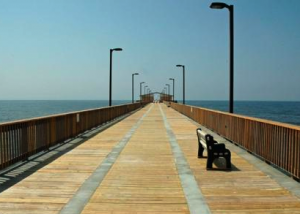Preparing For The Next Sandy
 The fallout from Hurricane Sandy will be with us for years, and it will extend far beyond the devastation in New York City, New Jersey and other parts of the East Coast.
The fallout from Hurricane Sandy will be with us for years, and it will extend far beyond the devastation in New York City, New Jersey and other parts of the East Coast.The immediate cleanup costs and economic losses are alarming. Current estimates are $33 billion in New York alone. But a far bigger challenge lies ahead: preparing for a future in which storms like Sandy and Irene are likely to occur more frequently. It is gargantuan task with no parallels, and there are millions of people and trillions of dollars worth of property sitting in harm’s way.
As a result of rising sea levels from warming global temperatures, coastal communities will require vastly expensive upgrades to key infrastructure such as subways, power grids and hospitals to boost their resiliency to stronger storms. It will require tough decisions on whether building and rebuilding should be encouraged in flood-prone areas. Above all, there’s the daunting task of curbing the pollution that creates these risks in the first place.
To adapt, we need bold action from governments, policymakers and the business community alike. Their efforts to date have proven to be grossly insufficient.
Let’s start with the business community – specifically, the insurance industry, the sector most vulnerable to skyrocketing storm losses.
Extreme weather losses are hitting insurers with a vengeance, yet U.S. insurers barely acknowledge it. They need to recognize that climate change is fueling larger drought, wildfire and flooding losses and build this into their business models and underwriting policies. This will certainly result in some higher premiums.
They need to offer stronger financial incentives for storm-proofing buildings and be a louder voice in influencing land-use planning and building codes so that coastal properties are better protected or not built at all.
And, lastly, insurers should be pushing for policies that reduce carbon pollution. Some re-insurers already are. “The insurance industry should have an interest in mitigating global warming because if we don’t do that, then we may run into hardly manageable conditions in the second half of the century,” the head of Munich Re’s Geo Risks Research Unit, Peter Hoppe, told the Huffington Post last week.
But there are limits to what insurance companies can do – and that’s where governments, regulators and politicians must be more accountable. Government-subsidized insurance programs have been far too lenient in allowing homes to be built and rebuilt in risky areas, resulting in enormous exposure for taxpayers.
We’ve seen this in Florida, where private insurers bolted from the state after regulators capped their premiums following a string of hurricanes. A state-run insurance program is now providing homeowners insurance, and it is on financially shaky ground. With a wide gap between premiums it collects and over $500 billion in overall exposure, it is one bad hurricane away from going bankrupt.
We’ve seen this in the National Flood Insurance Program, where artificially low premiums are grossly out of whack with the odds of losses. The New York Times cited one example in Biloxi, Miss., where a property valued at $183,000 flooded 15 times in a decade, costing the program $1.47 million. Overall, the program is $18 billion in debt and that’s before factoring in Hurricane Sandy flood losses. One encouraging sign is NFIP recently won approval to raise premiums 25 percent a year over the next five years, but rising costs for consumers are certainly cold comfort, and critics say far more still needs to be done.
Governments have also moved too slowly to make key infrastructure more resilient to stronger coastal storms. While Europeans coastal cities have invested billions to build storm locks and barriers, Eastern U.S. cities have done relatively little, making them more vulnerable to higher sea levels and storm surges. Storm-proofing subways, hospitals, electrical grids and other key infrastructure will cost tens of billions of dollars. Congress will be under enormous pressure to help with such costs, but given the deficit reduction talks also in play, the conversations won’t be easy.
More than ever, we need strong leadership from the business community and policymakers to boost our preparedness in a post-Sandy world. With increasing threats from ever-more-extreme weather, both groups must play a key role in keeping the U.S. economy out of harm’s way.
You can return to the main Market News page, or press the Back button on your browser.

